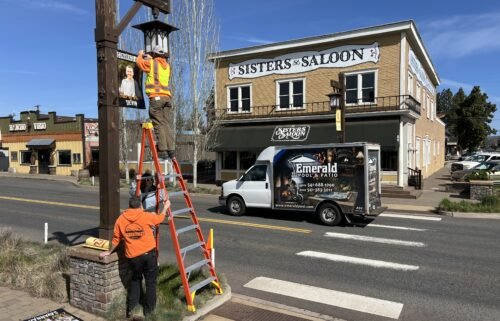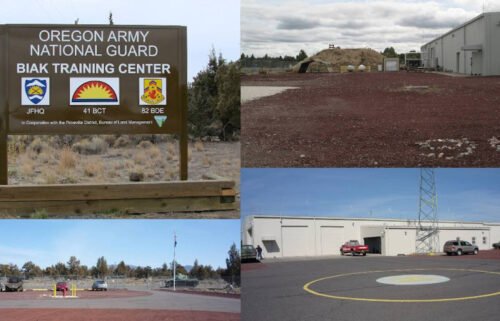Oregon health officials finalize plans on who gets COVID-19 vaccines first
(Update: Adding video, Oregon Nurses Association official comments, pre-pandemic stock footage)
Phase 1a broken into four groups; broad definition of 'health care personnel'
PORTLAND, Ore. (KTVZ) — As COVID-19 immunizations have begun around the state this week, the Oregon Health Authority said Friday it has finalized its recommendations for who will be the first to receive doses of new COVID-19 vaccines.
Oregon’s Phase 1a COVID-19 Vaccine Plan and Recommended Sequencing aligns with federal Advisory Committee on Immunization Practices and Centers for Disease Control and Prevention guidelines for broad groups to be included in the initial phase of vaccine distribution, OHA said in a news release, which continues in full below:
With a focus on health equity, the plan adds more granularity to federal recommendations and outlines specific populations within the broad groups — and in a wide range of health settings — that should be the focus for vaccination "when considering the allocation of scarce critical resources in the face of a public health crisis such as COVID-19."
The plan also creates a framework for distributing and sequencing COVID-19 vaccines throughout Oregon based on equity, individual, environmental and activity factors that put people more at risk for contracting or spreading the virus or experiencing serious health consequences from the virus.
"This plan helps us make sure we follow our own principles of health equity as we strive toward meeting our priorities for distributing the vaccine during this critical first phase," said Dana Hargunani, M.D., M.P.H., OHA chief medical officer.
These priorities include ensuring that vaccine is accessible for those who are included in Phase 1a and want to be vaccinated, and that information about COVID-19 vaccines is broadly available in a linguistically accessible and culturally responsive manner.
As stated in the plan, these priorities are critical "to be responsive to the diversity of people living in Oregon, and to mitigate historical and contemporary injustice and stigma of communities of color, tribal communities, people with disabilities, and longstanding mistrust of the system and distrust of vaccines."
The plan breaks up Phase 1a into four groups. Examples include but are not limited to:
- Group 1: Hospitals; urgent care; skilled nursing and memory care facility health care providers and residents; tribal health programs; emergency medical services providers and other first responders.
- Group 2: Other long-term care facilities and congregate care sites, including health care providers and residents; hospice programs; mobile crisis care and related services; individuals working in a correctional setting; personnel of group homes for children or adults with intellectual and developmental disabilities.
- Group 3: Outpatient settings serving specific high-risk groups; in home care; day treatment services; non-emergency medical transportation.
- Group 4: Health care personnel working in other outpatient and public health settings.
The types of individuals or settings within each group are not listed in any particular order and don’t indicate a planned "in-group" sequence, but are intended to be concurrent as logistics and vaccine dose availability allow, the plan states.
In addition, the plan calls for applying the broadest definition of "health care personnel" as outlined by ACIP and the CDC, which includes contractual staff not employed by a facility.
Jesse Kennedy, a nurse practices consultant with the Oregon's Nurses Association, told NewsChannel 21 on Friday that while most front-line workers are ready to get the vaccine, there is concern about having enough to distribute two doses to all who should get them.
"I think the main component right now is whether or not we're going to have enough vaccines to really get everybody who could possibly come in contact with a COVID patient," Kennedy said. "I think right now, it's mostly trying to triage which nurses are going to be in the greatest level of contact and getting them taken care of first."
In all, OHA said it expects that between 300,000 and 400,000 individuals will have access to COVID-19 vaccination during Phase 1a. Work is in progress to further estimate the numbers of people within each of the Phase 1a groups.
OHA said it also continues to work with state agency and community partners to communicate broadly about Phase 1a plans, and to develop detailed distribution plans for all potential Phase 1a recipients.
OHA’s equity-focused Vaccine Advisory Committee will be informing the next phases of vaccine distribution beyond Phase 1a to include critical workers, people with underlying health conditions and those older than 65. The general population isn’t expected to be eligible for vaccination until sometime in spring 2021.
# # #
Stay informed about COVID-19:
Oregon response: The Oregon Health Authority and Oregon Office of Emergency Management lead the state response.
United States response: The Centers for Disease Control and Prevention leads the U.S. response.
Global response: The World Health Organization guides the global response.



